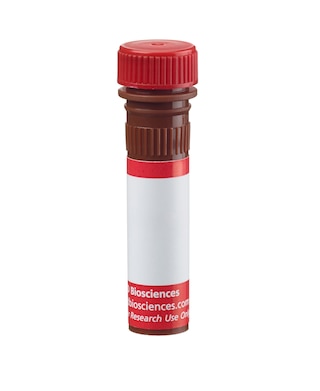-
Training
- Flow Cytometry Basic Training
-
Product-Based Training
- BD FACSDiscover™ S8 Cell Sorter Product Training
- Accuri C6 Plus Product-Based Training
- FACSAria Product Based Training
- FACSCanto Product-Based Training
- FACSLyric Product-Based Training
- FACSMelody Product-Based Training
- FACSymphony Product-Based Training
- HTS Product-Based Training
- LSRFortessa Product-Based Training
- Advanced Training
-
- BD FACSDiscover™ S8 Cell Sorter Product Training
- Accuri C6 Plus Product-Based Training
- FACSAria Product Based Training
- FACSCanto Product-Based Training
- FACSLyric Product-Based Training
- FACSMelody Product-Based Training
- FACSymphony Product-Based Training
- HTS Product-Based Training
- LSRFortessa Product-Based Training
- United States (English)
-
Change country/language
Old Browser
This page has been recently translated and is available in French now.
Looks like you're visiting us from {countryName}.
Would you like to stay on the current country site or be switched to your country?




Flow cytometric analysis of CD106 expression on mouse bone marrow cells. BALB/c mouse bone marrow cells were stained with either an Alexa Fluor® 647 Rat IgG2a, κ Isotype Control (Cat No. 557690, Left Panel) or with the Alexa Fluor® 647 Rat Anti-Mouse CD106 antibody (Cat No. 561612, Right Panel). Flow cytometric dot plots showing the correlated expression of side light-scatter versus CD106 (or Ig isotype control staining) were derived from total viable cells from bone marrow. Flow cytometry was performed using a BD™ LSR II Flow Cytometer System.


BD Pharmingen™ Alexa Fluor® 647 Rat Anti-Mouse CD106

Regulatory Status Legend
Any use of products other than the permitted use without the express written authorization of Becton, Dickinson and Company is strictly prohibited.
Preparation And Storage
Product Notices
- Since applications vary, each investigator should titrate the reagent to obtain optimal results.
- An isotype control should be used at the same concentration as the antibody of interest.
- The Alexa Fluor®, Pacific Blue™, and Cascade Blue® dye antibody conjugates in this product are sold under license from Molecular Probes, Inc. for research use only, excluding use in combination with microarrays, or as analyte specific reagents. The Alexa Fluor® dyes (except for Alexa Fluor® 430), Pacific Blue™ dye, and Cascade Blue® dye are covered by pending and issued patents.
- Alexa Fluor® is a registered trademark of Molecular Probes, Inc., Eugene, OR.
- Alexa Fluor® 647 fluorochrome emission is collected at the same instrument settings as for allophycocyanin (APC).
- Caution: Sodium azide yields highly toxic hydrazoic acid under acidic conditions. Dilute azide compounds in running water before discarding to avoid accumulation of potentially explosive deposits in plumbing.
- For fluorochrome spectra and suitable instrument settings, please refer to our Multicolor Flow Cytometry web page at www.bdbiosciences.com/colors.
- Please refer to www.bdbiosciences.com/us/s/resources for technical protocols.
Companion Products


The 429 monoclonal antibody specifically binds to both the long (~110 kDa) transmembrane-spanning form and the truncated (~47 kDa) GPI-linked form of vascular cell adhesion molecule-1 (VCAM-1, CD106). CD106 is constitutively expressed on bone marrow stromal cells, myeloid cells, and splenic dendritic cells. Its expression on endothelial cells is upregulated by inflammatory cytokines and in certain pathologic conditions. CD106 expression has also been detected on apoptotic thymocytes, splenocytes, and lymphoid cell lines. VCAM-1 is a counter-receptor for VLA-4 (α4β1 integrin) and LPAM-1 (α4β7 integrin), and the 429 antibody partially blocks VCAM-1-mediated binding functions. Source of the immunogen was the mouse preadipose cell line PA6.
Development References (6)
-
Baron JL, Reich EP, Visintin I, Janeway CA Jr. The pathogenesis of adoptive murine autoimmune diabetes requires an interaction between alpha 4-integrins and vascular cell adhesion molecule-1. J Clin Invest. 1994; 93(4):1700-1708. (Biology). View Reference
-
Bevilacqua MP. Endothelial-leukocyte adhesion molecules. Annu Rev Immunol. 1993; 11:767-804. (Biology). View Reference
-
Ishiyama N, Kitagawa M, Takahashi H, Kina T, Hirokawa K. Expression of VCAM-1 in lymphocytes during the process of apoptosis. Pathobiology. 1998; 66(6):274-283. (Biology). View Reference
-
Kinashi T, Springer TA. Adhesion molecules in hematopoietic cells. Blood Cells. 1994; 20(1):25-44. (Biology). View Reference
-
Kinashi T, St Pierre Y, Springer TA. Expression of glycophosphatidylinositol-anchored and -non-anchored isoforms of vascular cell adhesion molecule 1 in murine stromal and endothelial cells. J Leukoc Biol. 1995; 57(1):168-173. (Immunogen). View Reference
-
Koni PA, Joshi SK, Temann UA, Olson D, Burkly L, Flavell RA. Conditional vascular cell adhesion molecule 1 deletion in mice: impaired lymphocyte migration to bone marrow. J Exp Med. 2001; 193(6):741-754. (Biology). View Reference
Please refer to Support Documents for Quality Certificates
Global - Refer to manufacturer's instructions for use and related User Manuals and Technical data sheets before using this products as described
Comparisons, where applicable, are made against older BD Technology, manual methods or are general performance claims. Comparisons are not made against non-BD technologies, unless otherwise noted.
For Research Use Only. Not for use in diagnostic or therapeutic procedures.
Report a Site Issue
This form is intended to help us improve our website experience. For other support, please visit our Contact Us page.